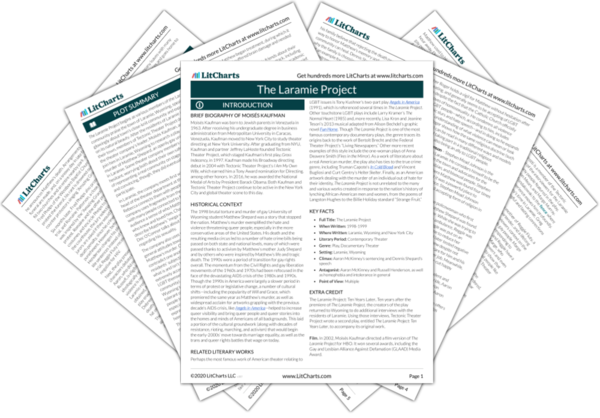Next
Summary
The Laramie Project Study Guide |
Next
Summary
|
Welcome to the LitCharts study guide on Moisés Kaufman's The Laramie Project. Created by the original team behind SparkNotes, LitCharts are the world's best literature guides.

The Laramie Project: Ten Years Later. Ten years after the premiere of The Laramie Project, the creators of the play returned to Wyoming to do additional interviews with the residents of Laramie. Using those interviews, Tectonic Theater Project wrote a second play, entitled The Laramie Project: Ten Years Later, to accompany its original work.
Film. In 2002, Moisés Kaufman directed a film version of The Laramie Project for HBO. It won several awards, including the Gay and Lesbian Alliance Against Defamation (GLAAD) Media Award.